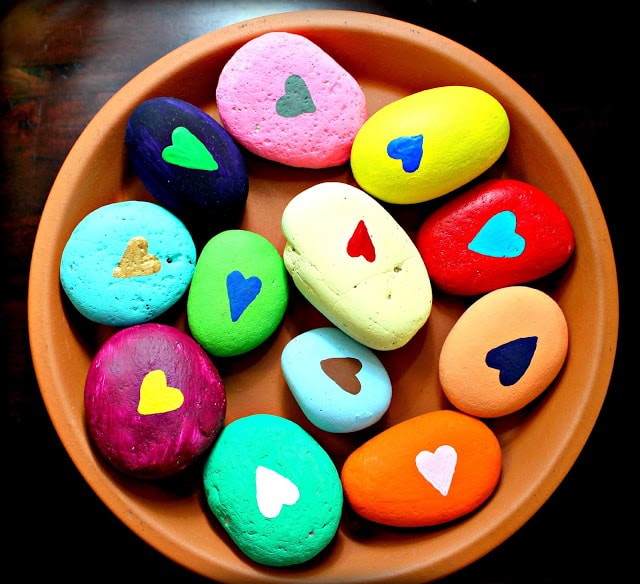Making Paint From Rocks: A Creative Guide To Natural Pigments
Have you ever wondered how to create your own paint using natural materials? Making paint from rocks is not only a fun and creative process but also a sustainable way to produce beautiful colors for your artistic projects. In this comprehensive guide, we will explore the fascinating world of rock-based pigments, from gathering the materials to creating your very own paint. The practice of using natural minerals and rocks for coloring dates back to ancient civilizations, where artists relied on the earth’s resources to express their creativity. As we delve into the steps required for making paint from rocks, you'll discover the methods, tips, and techniques that can help you achieve stunning results.
In this article, we will discuss the different types of rocks suitable for creating pigments, the tools you’ll need, and the step-by-step process of transforming these rocks into vibrant paint. Whether you are an artist seeking a unique medium or a DIY enthusiast looking for a new project, making paint from rocks can be an enlightening experience. So, let’s get started on this colorful journey!
We will also touch upon the historical significance of natural pigments, their applications in modern art, and how you can experiment with different colors and textures. By the end of this guide, you'll have all the knowledge you need to embark on your own rock-painting adventure!
Table of Contents
- 1. Introduction to Making Paint from Rocks
- 2. Historical Significance of Natural Pigments
- 3. Types of Rocks for Pigment Creation
- 4. Tools Required for Making Paint
- 5. Step-by-Step Process of Making Paint from Rocks
- 6. Using Your Homemade Paint
- 7. Safety Tips When Working with Rocks
- 8. Conclusion
1. Introduction to Making Paint from Rocks
Making paint from rocks is an ancient practice that has resurfaced in modern times due to the increasing interest in sustainable and eco-friendly art supplies. By utilizing natural resources, artists can create beautiful, one-of-a-kind colors that are both rich in history and vibrant in their application.
2. Historical Significance of Natural Pigments
Natural pigments have been used for thousands of years, with evidence of their use found in prehistoric cave paintings. Artists in ancient Egypt, Greece, and Rome created their artworks using earth pigments derived from minerals, clays, and rocks. The vibrant colors we see in these historical artworks are a testament to the durability and beauty of natural pigments.
3. Types of Rocks for Pigment Creation
When it comes to making paint from rocks, not all rocks are created equal. Here are some of the most commonly used types of rocks for pigment creation:
3.1 Ochre
Ochre is a natural clay earth pigment that ranges in color from yellow to deep orange or brown. It is one of the oldest pigments used by humans and is known for its excellent lightfastness.
3.2 Hematite
Hematite is an iron oxide mineral that produces a rich, deep red color. It is often used in both paint and cosmetics due to its vibrant hue.
3.3 Charcoal
Charcoal, derived from burned wood, can be ground into a fine powder to create a black pigment. It is commonly used for sketching and shading in art.
4. Tools Required for Making Paint
Before you start making paint from rocks, gather the following tools:
- Mortar and pestle or a rock grinder
- Water
- Strainer or cheesecloth
- Containers for mixing and storing paint
- Gloves and safety goggles (for protection)
5. Step-by-Step Process of Making Paint from Rocks
Follow these steps to create your own paint from rocks:
- Gather your rocks of choice and ensure they are clean.
- Use a mortar and pestle or rock grinder to crush the rocks into a fine powder.
- Add a small amount of water to the powdered rocks to create a paste.
- Strain the mixture through a cheesecloth to remove any larger particles.
- Adjust the consistency by adding more water or powder until you achieve your desired texture.
- Store the paint in airtight containers for future use.
6. Using Your Homemade Paint
Your homemade rock paint can be used on various surfaces, including paper, canvas, wood, and more. Experiment with different application techniques, such as brushes, sponges, or even your fingers, to create unique textures and effects.
7. Safety Tips When Working with Rocks
While making paint from rocks can be a safe and enjoyable activity, it’s essential to follow these safety tips:
- Wear gloves to protect your hands from dust and pigments.
- Use safety goggles to shield your eyes from any particles.
- Work in a well-ventilated area to avoid inhaling dust.
- Keep your workspace clean to prevent accidents.
8. Conclusion
In conclusion, making paint from rocks is a rewarding and creative endeavor that allows you to explore the beauty of natural pigments. By following the steps outlined in this article, you can create your own vibrant colors while embracing sustainability and artistic expression. We encourage you to share your experiences and creations in the comments below, and don’t forget to check out our other articles for more DIY projects!
Thank you for joining us on this colorful journey, and we hope to see you back here for more creative adventures!
Best Epcot Rides: A Comprehensive Guide To The Must-Experience Attractions
Vegan Meal Prep: The Ultimate Guide For Healthy Eating
Exploring "Me And You" By Kenny Chesney: A Deep Dive Into The Lyrics And Meaning


